

Anorectal conditions refer to disorders that affect the anus and rectum, often causing discomfort, pain, or bleeding. These issues are more common than many realize and can significantly impact a person’s daily life and well-being. While some anorectal conditions are mild and resolve with lifestyle changes or medication, others may require medical or surgical intervention. Early diagnosis and treatment are essential to prevent complications and improve quality of life.
Common Anorectal Conditions:
Several anorectal disorders are frequently encountered in clinical practice, including:
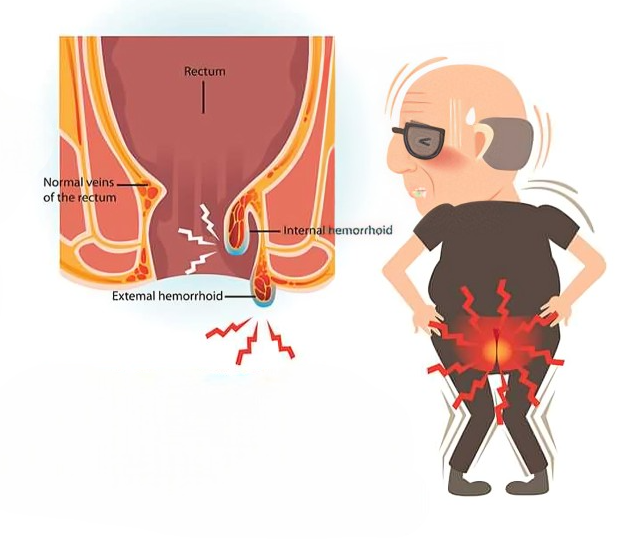


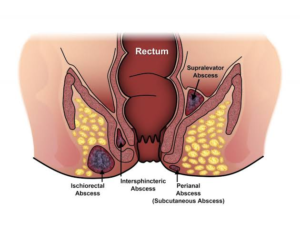
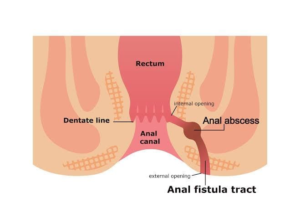

Surgical intervention is considered when conservative treatments fail to relieve symptoms or when complications arise. Persistent pain, recurrent bleeding, or chronic infections that do not improve with medication or lifestyle modifications often indicate the need for surgery. Hemorrhoids that are large or unresponsive to conservative treatment may require surgical removal. Anal fissures that do not heal with topical treatments, and most anal fistulas, especially those associated with recurring abscesses, often need surgical intervention to prevent ongoing infection and complications. Perianal and ischiorectal abscesses typically require prompt drainage to relieve pain and prevent the spread of infection. Timely surgical care reduces the risk of chronic symptoms and further health issues.
1. Non-Surgical Treatment
These are effective for mild to moderate hemorrhoids and anal fissure. It is also followed in post-operative perianal cases.

2. Surgical Treatment
Hemorrhoids : Recommended for severe, persistent, or recurring hemorrhoids:
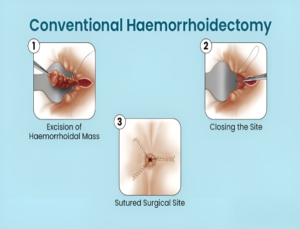
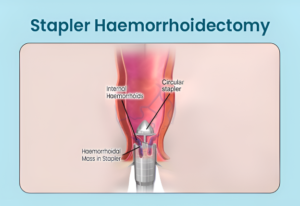
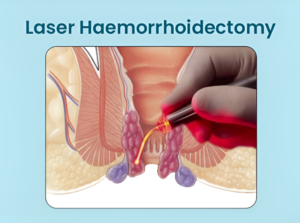
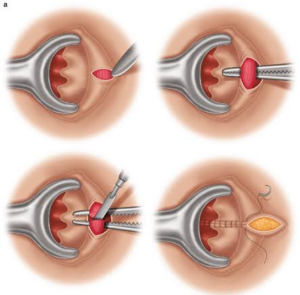
Chronic fissures or those resistant to medical treatments may require:
Lateral Sphincterotomy : A small portion of the anal muscle is carefully cut to relieve spasm and promote healing. It is the most effective long-term solution with high success rates.
Treatment depends on the type and severity of the disease.
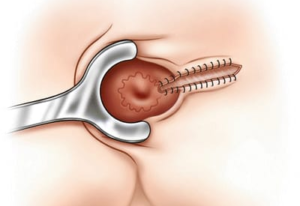
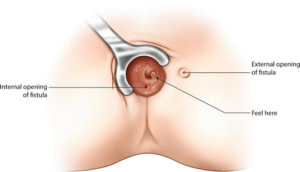


Recovery depends on the treatment type. Most non-surgical treatments allow a quick return to daily activities. Surgical procedures may require a few days to a week of rest.
Don’t neglect persistent perianal pain/ bleeding or discharge from anal region. Timely diagnosis and treatment of anorectal conditions are essential to avoid complications and improve comfort.
Our team provides personalized care instructions and follow-up support to ensure complete recovery and long-term relief. We prioritize your comfort, privacy, and long-term well-being.
Book your consultation today and get lasting relief from anorectal issues at “Vizag Surgicare”.
Mobile No 1 : +91-9849239213
Mobile No 2 : +91-9848638615
First Floor, Mohan Medical Shop, Seethammadhara (NE), Visakhapatnam-530013
info@vizagsurgicare.com
WhatsApp us